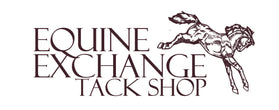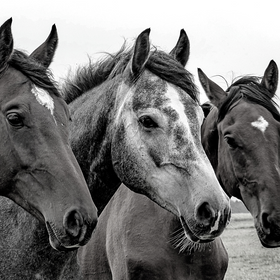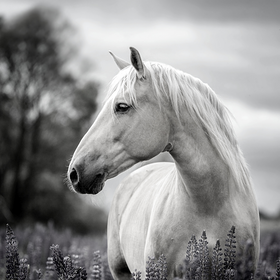
The Dangers of Moldy Hay
If you know anything about horses, you know that hay is a fundamental part of the equine diet. However, a silent threat may be lurking in some of your bales: moldy hay. Understanding how to identify and mitigate risks and prevent mold formation in hay is an important skill. Keep reading to delve into the world of moldy hay, examining its identification, dangers, and strategies to prevent it from forming.
What is Moldy Hay?
Moldy hay is a result of fungal growth on stored or baled hay. Mold spores find a breeding ground in hay improperly harvested, stored, or exposed to excessive moisture. The mold development can occur both during the growing season and after it has been cut, especially if the hay is not stored in humid conditions or is inadequately dried.
Identifying Moldy Hay
Recognizing moldy hay is crucial for preventing potential health hazards for animals and humans. Signs of mold contamination in hay include:
- Visible mold growth can look like discoloration, fuzzy patches, or irregular spots on the bales' surface.
- Musty odor—Mold-infested hay often emits a distinctive musty or sour odor. A sharp change in the hay's usual scent should raise concerns.
- Unusual heat—Mold generates heat during its growth process. Elevated temperatures within the haystack can indicate the presence of mold.
- Dustiness—Moldy hay tends to be dusty due to the breakdown of hay particles.
The Dangers of Moldy Hay
- Respiratory Issues—Mold spores in hay can trigger respiratory problems in horses. Inhalation of mold particles can lead to heaves, coughing, and nasal discharge.
- Digestive Problems—Mold toxins may lead to colic, diarrhea, or other gastrointestinal problems, which can be fatal for horses.
- Weakened Immune System—Prolonged exposure to moldy hay can compromise the immune system and make your horse more susceptible to infections and illnesses.
- Allergic Reactions—People working with moldy hay are at risk of developing allergies or respiratory issues
How to Avoid Moldy Hay
One of the best ways to avoid moldy hay is by ensuring proper harvesting and drying techniques. Harvest hay when it is at the appropriate stage of maturity, as overripe hay is more prone to mold development. Hay should be cut and dried in the field as quickly as possible to minimize exposure to potential moisture.
Baling hay, when it is too wet, can trap moisture inside the bales, creating an ideal environment for mold to thrive. Aim for a moisture content of 15% or less before baling, which helps inhibit mold growth and ensures the hay retains its nutritional value.
After baling, proper hay storage is critical—store hay in a dry, well-ventilated space to prevent exposure to moisture. Elevate bales off the ground using pallets or a raised platform to avoid moisture.
Regularly inspect your stored hay to identify any signs of mold early on. Check for discoloration, unusual odors, and changes in temperature within the haystack. Remove and discard any moldy bales promptly to prevent further contamination.
Proper ventilation is also crucial for preventing mold growth in stored hay. Make sure to arrange bales to allow for good air circulation, reducing the likelihood of moisture accumulation. You can use fans or opening doors and windows in storage areas to promote airflow.
Now that you know the dangers of moldy hay and how to identify it, you have more tools to help keep your horse healthy. Try incorporating some of these preventative measures into your hay harvesting and storage practices to reduce the risk of moldy hay significantly. This way, you not only safeguard your horses' health but also preserve your hay's nutritional quality.





